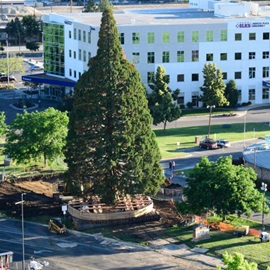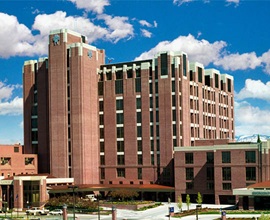One year after its move, Idaho’s oldest and largest sequoia thrives
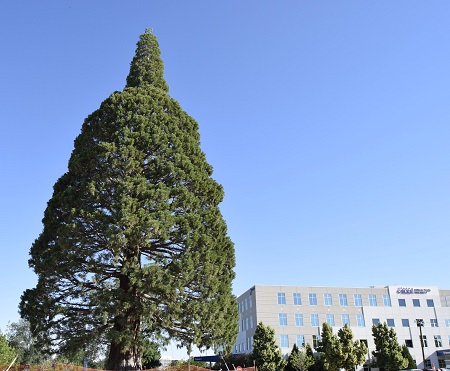
It’s arguably the most-famous and most-monitored tree in a city known for trees -- Idaho’s oldest and largest giant sequoia. One year after the world watched the historic tree roll down the street in an incredible preservation and relocation effort, the sequoia is thriving in its new home.
“The tree is hanging in there fine,” said Boise City Forester Brian Jorgenson.
The sequoia now stands watch over Fort Boise Park, with tens of thousands of drivers passing by each day as they use the new roundabout at Reserve Street, and the improved intersection at Fort, State and 1st streets.
For more than a century, the sequoia stood about two blocks to the southeast outside St. Luke’s Boise Medical Center. The non-native tree had been planted in 1912 at the home of two well-known physicians. As health care needs have grown more complex and the Boise community grown in numbers, St. Luke’s launched a major redevelopment and expansion at the downtown hospital. The tree stood right in the spot a new tower will eventually go.
“Rather than simply cut it down, which would have been easier and less expensive, St. Luke’s recognized the significance of this community treasure. Building around it was not an option, but saving it was. The value of this tree to Idaho’s history, and to St. Luke’s history, is worth the investment,” said St. Luke’s Public Relations Manager Anita Kissée.
Over four days in late June 2017, the tree was pulled from that St. Luke’s spot and rolled down the street while hundreds of people, cell phones and news cameras all watched.
“We stopped keeping track after something like 275 news stories that ran or aired all around the world. The furthest was all the way in India in the New Delhi Times,” Kissée said.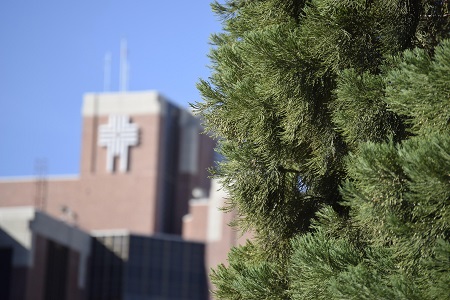
A living gift
As the sequoia’s designated community steward, St. Luke's committed to protecting and maintaining the treasure. The Health System decided the best way to ensure that protection continued was to donate it as a gift to the city of Boise.
The donation was fitting, as the sequoia started out as a gift to the hospital. The seedling is believed to have come from naturalist John Muir in California, and was one of four to arrive in Idaho via express.
Two were planted near St. Luke's and two went in the 11th Street backyard of Emile Grandjean. The conservationist originally donated the tree to Drs. Fred and Alice Pittenger. The photo below shows the size of those sequoias a few years after they were planted.
Only the one sequoia remains today. It nearly died in the 1980s as a result of Christmas lights and decorations. To restore its health, St. Luke’s ended the tradition and celebration of “Boise’s Christmas Tree,” and removed asphalt and landscaping that had been put in around it. As the tree continued to deteriorate, experts recommended the top dead 11 feet be cut off, which explains the tree’s unusual shape.
Thirty years later, the giant sequoia remains hearty.
“It is truly a family heirloom,” Mary Grandjean told St. Luke’s during the historic move. She’s the granddaughter of Emile Grandjean, the conservationist who originally donated the tree to Drs. Fred and Alice Pittenger. “We believe the tree speaks to the power of a gift and, in this case, a living gift.”
Jorgenson assures community, “I’m keeping a close eye on it.”
The City, St. Luke’s and Environmental Design are working together to monitor the sequoia's health over the next four years. Jorgenson personally checks in on the tree weekly to inspect the water tension. Underground sensors help with that.
“It’s been looking good,” he said. “Temperatures will start climbing soon, so I will ramp up irrigation accordingly. We also started the canopy mister a couple of weeks ago.”
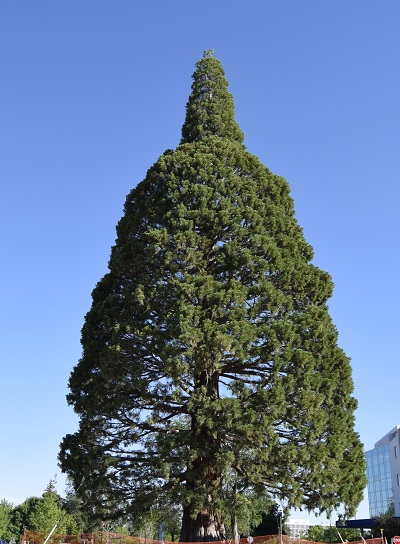
The ‘big tree’ move
The leader of the team that moved the giant sequoia also keeps tabs on its health. David Cox with Environmental Design, Inc. has also personally visited the sequoia several times over the last year and will be back in July for another check.
Cox says the sequoia needs up to three growing seasons before they’ll know if it’s fully recovered by the move, but points to the new growth and healthy green needles as a positive sign. He also believes the new location will be better for the sequoia. The old spot had too much shade from the tall hospital tower, which funneled wind toward the tree during cold winters and resulted in the needles turning brown.
In its new, more open location, Cox believes the sequoia should live another 300-500 hundred years, if properly cared for. “The community really does have a historical artifact,” Cox said during the move last year.
At 800,000 pounds and with a trunk more than 20-feet wide, the sequoia will likely always be the “big one” for Cox. He’s the top large tree mover in the country, and recalled the first conversation he had with the St. Luke’s project manager.
“We get a lot of calls saying ‘I’ve got a tree to move,’ and we get people who say ‘I’ve got a big tree,’ but I was at my desk on my computer and then he started describing the tree. Then I’m looking on Google Earth at the same time and he told me where it was, and I was like ‘yep, you got a big one alright.’”
The team from Texas started the process in October 2016. To prepare the 98-foot tree for its two-block trip, the roots were pruned and a barrier put in place to prevent further growth. After the winter thaw, workers came back to replace and enhance that support system, building a wire, burlap and wood structure around the base of the tree.
It ultimately took a complex conveyor system to tow the tree up a dirt ramp, over to the edge of Fort Street, then ultimately down the road where it was lowered into a hole dug at Fort Boise Park. Steel pipes inserted under the sequoia created a lattice-like support structure. Workers secured the tree’s limbs to the supports before excavating underneath to insert 40-foot long balloon-like bags. Those bags were inflated to lift the tree three feet, so crews could tow it inch by inch using two powerful excavators. As the platform was towed, the giant tubes were deflated, moved to the front and then re-inflated. The sequoia rolled 10-to-12 feet at a time over the course of about a minute and-a-half, and took four days to complete.
About The Author

Anita Kisseé was the Treasure Valley public relations manager for St. Luke’s Health System.

